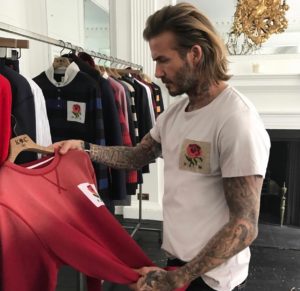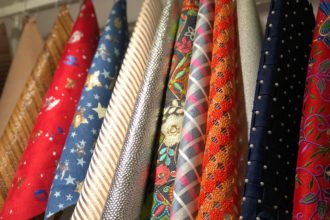Top Celebrity Rhinoplasty Surgeon Says Selfies Are Increasing Demand

To say that social media has changed the world would be a severe understatement.
Plastic surgery has been around for decades. As we know, in Hollywood it has always been favored, but aesthetic surgery has had a spike in popularity over the past ten years amongst those who do not fall into the starlet category.
A heavily weighed factor in this growth is social media. The majority of people in America today allow their lives to heavily revolve around social outlets such as Facebook, Instagram, and Twitter. No, being connected 24/7 and taking 70 photos to get the perfect selfie are not at all considered weird today, but this cultural phenomenon is affecting how people are viewing themselves offline as well.
Millennials, who are commonly identified as the culprits of the ‘social selfie obsession’, are not the only ones changing their appearance to emulate society’s definition of beauty. Men and women of all walks of life are seeking out ways to alter their appearance to achieve their desired look.
It may not seem like it after spending hours viewing before & afters, but plastic surgery is a huge decision that should be approached with caution and understanding. To avoid having botched surgery, heavy research and the consultation of a highly skilled expert should always be the patients first order of business.
How do you choose the right look & doctor for you?
To gain a better understanding of the how social media and ‘the selfie’ have affected rhinoplasty, we once again called upon the Godfather of Aesthetics, Dr. Ramtin Kassir, for an exclusive insight on how Instagram and other outlets have changed the game of aesthetic surgery.
IB: What are the most common reasons people ask for nose jobs?
Dr. Kassir: The most common would be a bump on the bridge, because they don’t like their profile; they don’t like the bone and they won’t take selfies. Often, they are the people who, when a photo is a taken, say “Oh no! Let me see that!” or “You have to delete that.” So there’s the bridge, the width, and the tip being round, big, bulbous, and/or droopy that they want fixed.
IB: Which celebrities do your patients most commonly reference when explaining what they are looking for?
Dr. Kassir: 90% of rhinoplasties that I do are female. These female patients are still referencing Scarlette Johannson, Kim Kardashian, and Angelina Jolie. What I’ve noticed is that if they want a little more of a “done” look, they have been referencing Cindy Kimberly, otherwise known on Instagram as WoflieCindy. Also, because I did a surgery on Lele Pons, who has over 22 million followers; many ask for her nose.
IB: Which celebrity do you think has a perfect nose?
Dr. Kassir: Nobody starts out with a perfect nose because they’ve all been done. It depends on taste and how trends are changing, but if they want a safe, good looking nose that’s acceptable, I’d have to still say, Angelina Jolie. If they’re looking for more of a classic or elegant look, I’d go with Selma Hayek.
IB: Who are the most requested male celebrity noses asked for?
Dr. Kassir: Recently we’ve gotten David Beckham, Enrique Iglesias, and once in a while, we still get Brad Pitt. I really think it’s about who the patient has a man-crush on.
IB: Do you find that rhinoplasty requests in men and women are pretty much the same or do you find them to be much different?
Dr. Kassir: Men, in general, want to look better, they don’t want to look different. Women in general, since they were kids, are used to being in salons, doing their hair, doing their nails, changing clothes; they’re used to trying different looks. Men don’t really want to look totally different. They just want a little more of a refined look. They don’t want anyone to know that they had plastic surgery, so you tailor the surgery accordingly.
IB: What do you tell patients that request alterations that are unachievable?
Dr. Kassir: I just tell them very straightforward, “Look, I see your goals and we can work towards them but your nose isn’t going to be that thin or that short. It’s not realistic, at least with only one surgery.” Usually, I then I decline and make sure they know the limits of what they want. If they’re okay with that, then we proceed – but if they are not, we have them go for a second opinion.
IB: What are the biggest challenges you face today being a rhinoplasty specialist?
Dr. Kassir: Well, there’s a lot of misinformation out there. We do 700-1000 rhinoplasties a year. The national average for people who do rhinoplasty and specialize in it is about 100 per year. So, having done so much and having so much experience, you’ll have patients come in and say, “Well, this doctor does it differently. They said they would do this,” or they read on on the internet and say, “I heard this…” There are a lot of less experienced doctors writing claims that we have to answer.
IB: Do you ever turn patients away from surgery completely?
Dr. Kassir: Yes. If I don’t think they’re emotionally ready, or that they’re physically ready, have some sort of body dysmorphia or self-esteem issues, I’ll turn them away. It could get very dangerous if I didn’t make those judgement calls. Safety is always my priority.
IB: Can you elaborate on the emotions that are tied to plastic surgery, especially rhinoplasty?
Dr. Kassir: Rhinoplasty is a very emotional operation since it is in the center of your face. The demographic is a 24-year-old girl; with the average being 24, +/-6, the standard deviation. We do a lot of teen rhinoplasty and we do a lot of rhinoplasty for those in their twenties; 88-90% in the year are performed on women, making it the young girl’s operation. This person, usually, has been picked on, bullied, and has been self-conscious about this since middle school because those are the years the body begins to go through puberty and the nose gets bigger.
When I speak to my patients, they open up and tell me things like that they hold the menu up over their nose when the waiter comes to take their order, or in today’s age, they don’t want to take selfies. I even get a lot of girls saying that they don’t smile a lot so they don’t take pictures, so on and so forth. It’s all of these behavioral indications that walk into the office. There’s anxiety. There’s fear. With everything online telling you what to and not to do, it scares patients even more. That’s the biggest challenge, being able to take all those fears away and tell patients that we’re not perfect, but we definitely know what we’re doing.
On top of all this, you have the parents weighing in, along with the boyfriend, the girlfriend, friends, and everybody else tell these patients that they’re perfect and they’re crazy. In some ways, they are. There’s nothing wrong with having a little bump on your nose or what have you, but if it bothers the patient, we’re here to help.
I had my nose done. My nose on the inside was horrible because I took an elbow to the face and I was injured. The inside of my nose needed to be done; my septum was crooked. I told the doctor- and this was 23 years ago- to not just fix the inside, but smooth out the outside a little bit too while he is in there. He was surprised that even I wanted that done, but when it’s you, it’s different.
You have to walk in a customer’s shoes for a thousand miles before you ask them how their feet feel. So to them, or whoever it is, the mom and dad may not understand it because they think their kids are perfect – and they are – but, it bugs them so they want it done.
“Selfies, bullying, teasing, celebrity pressure; it’s all relevant when it comes to plastic surgery, especially rhinoplasty. The most important message we can relay is never let anyone else influence the way you feel about yourself. It’s perfectly fine to want to better yourself and improve your appearance so that you have more confidence. Make you have the right mindset & the right doctor by your side every step of the way!”



